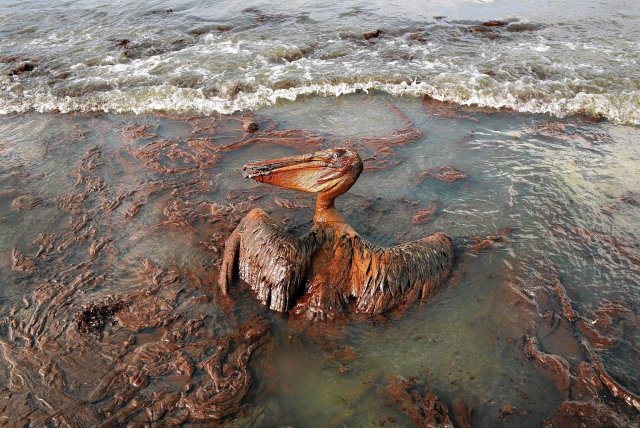
Just-released modelling from BP has revealed that an oil spill from an uncontained blowout on its proposed Stromlo-1 well is guaranteed to impact the South Australian coast. It is possible that anywhere across the southern Australian coast could be impacted, from Western Australia across to Tasmania and NSW.
In light of this, the Wilderness Society has called on Australia’s offshore oil and gas authority, National Offshore Petroleum Safety and Environmental Management Authority (NOPSEMA), to reject BP’s application to drill for oil in the Great Australian Bight.
BP modelled a 149-day spill — the time it would take to drill a relief well to permanently stop a blowout. But, even if BP could cap the well in the 35 days it claims, it would still have a high chance of impacting Adelaide, Port Lincoln and Kangaroo Island.
BP’s Deepwater Horizon blowout spilled 800 million litres of oil into the Gulf of Mexico for 87 days. The Stromlo-1 well, at 2250 metres, is 750m deeper than the Deepwater Horizon’s Macondo well.
The modelling shows impacts on coastline wildlife such as seals and sea lions, but does not model the more far-reaching impacts that could be expected on fisheries, which could be closed if affected by much lower concentrations of oil.
Wilderness Society South Australian Director Peter Owen said: “The impact would be truly devastating for marine life, birds, coastlines, fisheries, coastal communities and possibly anywhere along the southern Australian coast. The risks are too great.
“BP’s latest spill modelling summary also finally admits to the unacceptable impact that a spill in the Bight could have on critically important ecological systems and marine species that Australia has clear international obligations to protect.
“The impacts on fisheries would be even more far reaching and BP should release its full oil spill modelling and its full oil spill response plan.
Wilderness Society National Director Lyndon Schneiders said: “The risks posed by this project to the environment and to the coastal communities of southern Australia are simply too great.
“The time has come for the regulator NOPSEMA to draw a line under this project once and for all.
It is also time for BP to recognise that this project presents many risks, including to its own company’s long-term future and walks away.
“The Bight’s pristine waters are home to 36 species of whales and dolphins, including the world’s most important southern right whale nursery, as well as many humpback, sperm, blue and beak whales.
“The Bight also supports sea lions, seals, great white sharks, orcas, giant cuttlefish, some of Australia’s most important fisheries and migratory seabirds such as the albatross and the white-bellied sea eagle that Australia has international obligations to protect.”
Like the article? Subscribe to Green Left now! You can also like us on Facebook and follow us on Twitter.